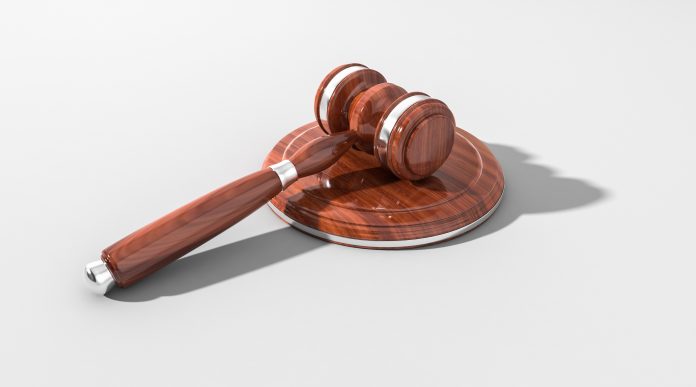This article has been written by Ria Goyal, a 3rd-year law student, pursuing BBA-LLB(H.) from The NorthCap University.
Case Overview
- Type of case: Inter-State
- State Parties: Nicaragua, United States of America
- Institution Name- ICJ (International Court of Justice)
- Citation: Military and Paramilitary Activities in and against Nicaragua (The Republic of Nicaragua V. The United States of America), 1986 I.C.J. 14
- Date of introduction: 9 April 1984
- Date of judgment (jurisdiction): 26 November 1984
- Date of judgment (merits): 27 June 1986
- Judges: Nagendra Singh, Guy Ledreit de Lacharrière, Roberto Ago, Mohammed Bedjaoui, Taslim Olawale Elias, Manfred Lachs, Kéba Mbaye, Ni Zhengyu, Shigeru Oda, José María Ruda, Stephen Schwebel, José Sette-Camara, Robert Jennings, Claude-Albert Colliard (ad hoc)
- Status of case: Concluded
Background and brief facts
This case was about the military activities which were conducted directly, or with the help of the United States.
In 1909, the United States of Americas’ military and marine rule deposed the President of Nicaragua and established their rule by occupying the territory of Nicaragua.
A Pro-US government was constituted which led to the formation of several treaties between the two States. These treaties gave exclusive rights and privileges of trade, transport, commerce, and access of Nicaragua to the United States. This led to a rebellion in Nicaragua between 1927 to 1934 which resulted in forcing the United States to leave Nicaragua while withdrawing the marines.
Somoza, who was the head of the Nicaraguan National Guard was instated as the head of the State by the United States. He later ended up becoming the dictator of Nicaragua.
In 1972, an earthquake occurred in Nicaragua, which led to large-scale destruction in the country. After the earthquake of 1972, the Sandinista (FSLN) Movement was seen rising. The purpose of this movement was to provide support to the affected people, regardless of their position in society. This Movement later ended up transcending to a rebellion against the Somoza governed dictatorship rule of the Country.
This threatened the control of the United States over Nicaragua. As a consequence, the United States stopped its aid to Nicaragua around April 1981, and later in September 1981, Nicaragua claimed that the United States decides to plan and undertake activities directed against the country. This was followed by armed activities being conducted against the government which was formed in Nicaragua. These activities were mainly carried on by FDN (Fuerza Democratica Nicaragüense) and ARDE (Alianza Revolucionaria Democratica). The former operated along the border of Honduras and the latter along the border of Costa Rica. Later they resorted to the formation of Contras. Contras was a rebel group formed for the purpose of suppressing the Sandinista (FSLN) Movement and continuing with the dictatorship rule. This was still covert support.
Alas, Contras lost and the involvement of the United States by way of supporting the organization led to the violation of the sovereignty of Nicaraguan, the government of Nicaraguan filed a claim before the International Court of Justice against the United States.
Issues raised and arguments presented
- Whether the International Court of Justice had the jurisdiction to try and adjudge the matter?
The US claimed that the International Court of Justice had no jurisdiction to try and adjourn the matter as the UN Charter and the Charter on the Organization of the American States are multi-lateral treaties and an essential element to try a case as such is that all members of the treaty are parties to the case. Given the absence of other members, the United States claimed that the International Court of Justice doesn’t have jurisdiction in the present matter.
The United States also claimed that the provisions invoked by Nicaragua have been reserved by them and so the International Court of Justice is not competent to pass any judgment based on them.
- Whether the support by the United States to the Contras amount to interference with the sovereignty of Nicaragua?
Nicaragua argued that the role that the United States played by giving rise to Contras and assisting them directly to suppress the Sandinista (FSLN) Movement was a clear intervention in the internal affairs of the country and hence in violation of the Convention on the Rights and Duties of the States.
Apart from this, Nicaragua also claimed that the attacks done by the United States by way of land, air, and sea where a violation of the International Laws of Land and Seas. It was an act of aerial trespass which violated several international laws and treaties
- Whether the United States has violated Article 2 of the UN Charter, Articles 18 and 20 of the Charter on the Organization of the American States, and Article 8 of the Convention on the rights and duties of the States?
The argument raised by Nicaragua was that the United States had recruited, trained, and equipped the recruits with arms to cause disruptions and stir up violence in Nicaragua. This was a clear violation of Article 2(4) of the U.N. Charter as the members were refrained to use force against the political independence and territorial integrity of any State. The United States government had taken unauthorized military actions against Nicaragua and since this was not an act of self-defense, it was a clear violation of Article 18 and 20 of the Charter on the Organization of the American States.
The United States also pled self-defense to surpass the accusation of violating Article 18 of the Charter on the Organization of the American States.
Rule of Law
The following are the laws that were claimed to have been violated by the United States.
Article 2 of the UN Charter
All Members shall refrain in their international relations from the threat or use of force against the territorial integrity or political independence of any state, or in any other manner inconsistent with the Purposes of the United Nations.
Article 18 of the Charter on the Organization of the American States
The American States bind themselves in their international relations not to have recourse to the use of force, except in the case of self-defense in accordance with existing treaties or in fulfillment thereof.
Article 20 of the Charter on the Organization of the American States
All international disputes that may arise between the American States shall be submitted to the peaceful procedures set forth in this Charter, before being referred to the Security Council of the United Nations.
Article 8 of the Convention on the Rights and Duties of the States
No state has the right to intervene in the internal or external affairs of another.
Judgment
This was a 142-page judgment, containing 291 points of the verdict. The arguments put forth by the United States regarding multilateral treaty reservations were valid. This made it difficult for the Court to depend upon the UN Charter. So, the court ended up developing a significant jurisprudence on customary international law.
The Court in passing this judgment observed that:
- There did exist a direct relationship between members of Contras and the United States government.
- The United States government was in fact directly involved in recruiting and supplying arms to members of Contras which lead to violence being provoked in Nicaragua
- The United States government did commit illegal trespass by way of marines and armed forces resulting in violation of the laws of Sea and Air
- Sufficient evidence has been found to conclude that the sovereignty of Nicaragua was hampered directly by the acts done by the United States government.
- The claim of self-defense was rejected as it lacked merit.
The International Court of Justice held that the United States is liable for the violation of several international treaties and customary international laws. It was ordered to withdraw support from Contras and put an end to the attacks on Nicaragua. The court also ordered reparations against the United States.
It was also observed that the independent nature of treaty law in comparison to the existence of customary laws.
A controversial aspect of this judgment was the definition given of armed attack.
The court held that an armed attack includes action taken by an armed force beyond the international border and sending any groups of people to carry out acts of armed force against another state.
This part of the judgment closely resembles Article 3(g) of the UNGA Resolution 3314 (XXIX) on the Definition of Aggression.
This judgment is set based on the customary international laws on matters relating to the elements which are necessary to establish customary international laws, the relationship between customary law and treaty law, and lastly, using force and non-intervention.
In spite of the multilateral treaty reservations, the court ended up relying on the multilateral treaties which helped determine the customary international laws. The court goes into great detail to establish the relationship between the treaty and international laws.
Conclusion
When the court decided to apply customary law in its decision, the burden fell upon the court itself to make sure that the rules of customary law were relevant to the present case. To conclude that it was in fact a customary law, opinio juris and state practice had to be established.
The court observed that opinio Juris was easily established by looking at the General Assembly resolutions passed. But what lacked in the judgment was the presence of state practice. It was a common belief by many scholars that establishing state practice was more essential than opinio juris. It is only after State Practice was established beyond reasonable doubt that Opinio Juris would even be considered.
The Court while justifying their decision stated that the conduct of the States should be consistent with the established rules and any inconsistent behavior should be treated as a breach of that rule and not the formation of a new rule. So, a general consent of member states is enough to establish opinio juris.
This opinion made this judgment a landmark judgment as it went against common practice and belief.
This was a blow on the United States government. The court in passing this judgment crossed all the restrictions that were placed against it and surpassed all the diplomatic pressure that was being put upon it because the United States is a global dominator. This is considered to be a major achievement for the court because it was able to surpass the pressure to deliver an unbiased decision.
A notable fact that I’d like to highlight is that the dissenting opinion given by Judge Schwebel was twice as long as the actual judgment.
Where the judgment was celebrated by many, it was barely an achievement. This case also highlights the weakness of international law as after the judgment was passed by the United States refused to pay the reparations to Nicaragua and withdrew its declaration of compulsory jurisdiction. The United States also blocked Nicaragua’s appeal to the UN Security Council. On 18 January 1985, the United States even announced that it had no intention to participate in any further proceedings relating to this case.
So, regardless of the landmark nature of the judgment, there was a lack in the implementation of the order and there isn’t really anything that can be done about it.
Students of Lawsikho courses regularly produce writing assignments and work on practical exercises as a part of their coursework and develop themselves in real-life practical skills.
LawSikho has created a telegram group for exchanging legal knowledge, referrals, and various opportunities. You can click on this link and join:
https://t.me/joinchat/J_0YrBa4IBSHdpuTfQO_sA
Follow us on Instagram and subscribe to our YouTube channel for more amazing legal content.
 Serato DJ Crack 2025Serato DJ PRO Crack
Serato DJ Crack 2025Serato DJ PRO Crack











 Allow notifications
Allow notifications



